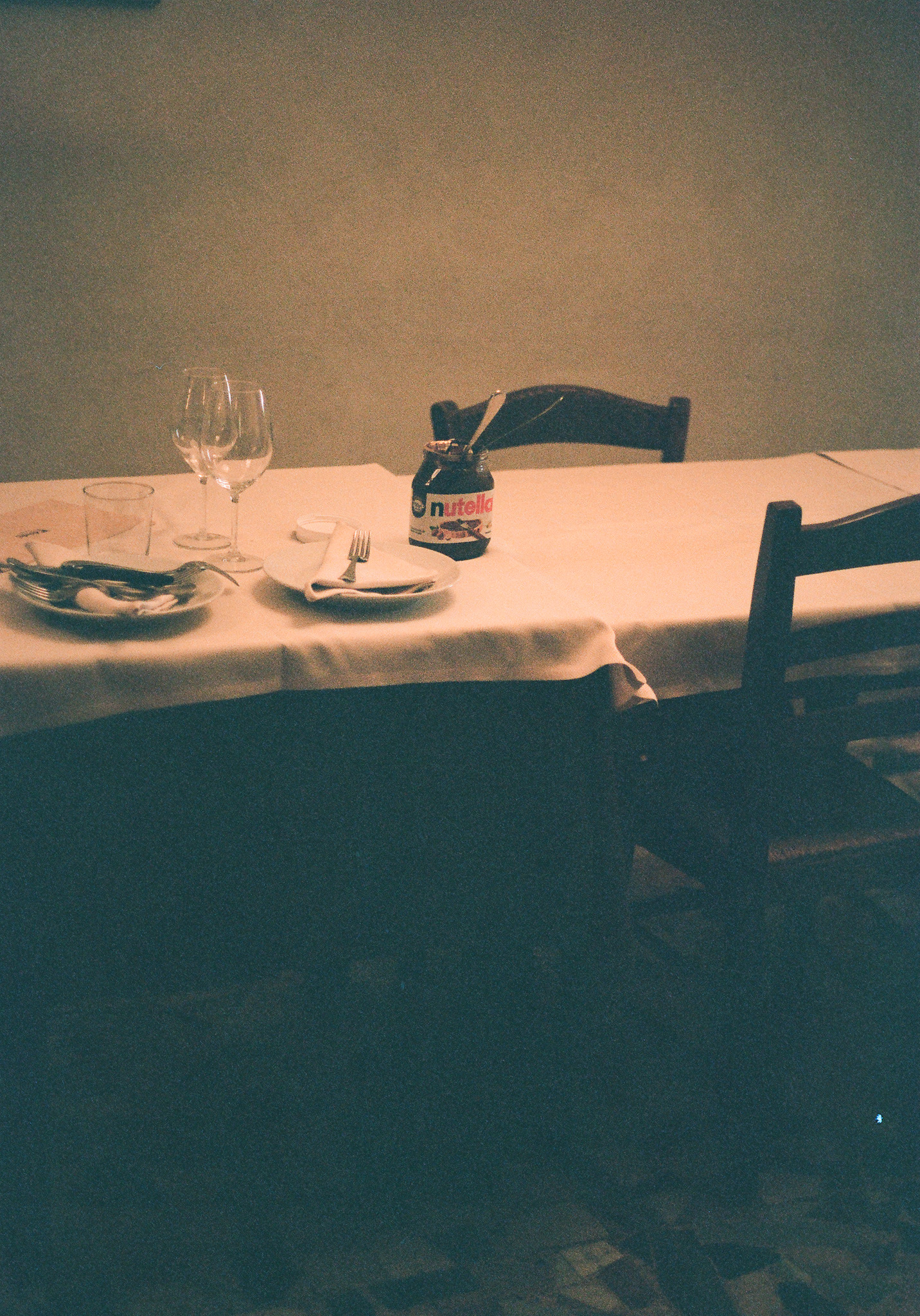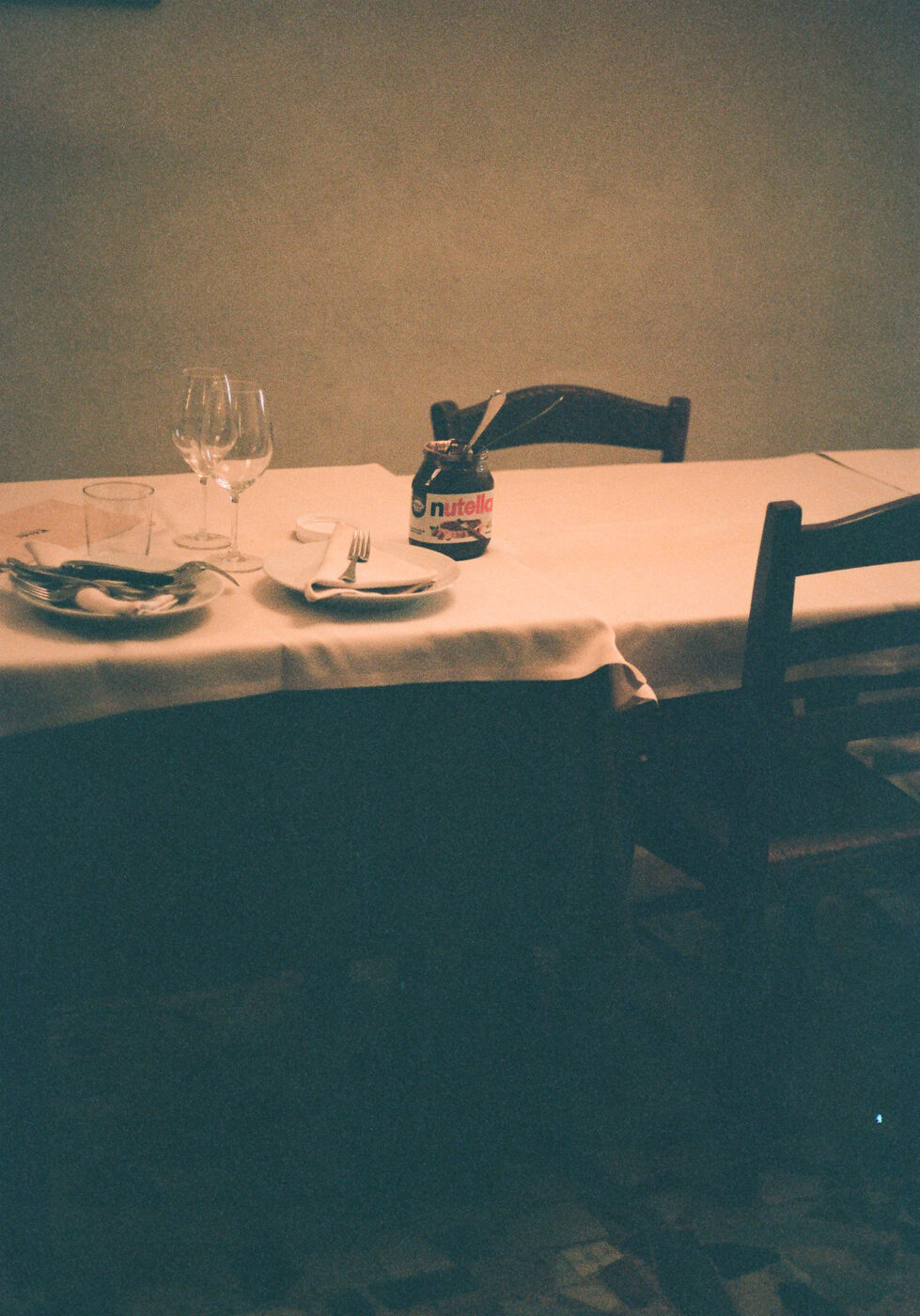“What’s that smell?” I remember asking my friend as we cycled along the Tanaro river towards Alba. The air was dense with a sticky, sweet, toasted aroma—pleasant at first, then vaguely nauseating. “Ah,” he said with a grimace. “It’s the smell of that thing your parents didn’t want you to eat when you were a child. And also, the smell of what made this place what it is, one hazelnut at a time.”
I realized we were approaching the Ferrero plant. Nutella must have been in the pipeline—a secret recipe still shrouded in mystery and palm oil. At that moment, a scene from the endless tug-of-war with my mother over buying a jar crossed my mind. “I’ll buy you a real crema nocciola sometime,” she’d say. “It’s not the same thing,” I’d reply, my best judgment dimmed by endless TV commercials. “You don’t even like sweet things,” she’d remind me. Little did I know—and I thanked her for it later—that she was trying to steer me away from shortcuts and introduce me to something closer to the source, to the origin of that mesmerizing flavor, to the life-altering experience that is fine Piedmontese gianduia.
Celebrated as one of Piedmont’s iconic culinary products, gianduia originated in the early 19th century as a soft paste made with a mix of milk chocolate and toasted hazelnuts. Gianduia was, first and foremost, an invention born of ingenuity, its creation linked to the Napoleonic Wars and the economic challenges they brought to Italy. During the early 1800s, Napoleon imposed a trade embargo on British goods throughout Europe, significantly impacting the import of cocoa beans, which were expensive and hard to obtain. Piedmontese chocolatiers, faced with this shortage and seeking a way to stretch their limited chocolate supplies, turned to an abundant local product: hazelnuts from the Langhe region.
Hazelnuts in Piedmont, particularly the prized Tonda Gentile delle Langhe variety, were known for their lower bitterness and superior taste compared to other types, as well as for their intense aroma and creamy, buttery texture. By blending finely ground hazelnuts with chocolate, these artisans created a new type of confection that stood out for its nutty, layered sweetness.

Gianduiotti; Courtesy of Peyrano
But what’s with the name? Interestingly, it comes from Gianduja, a traditional masked character from Turin’s Commedia dell’arte–the quintessential gentleman, charming, courageous, and charitable. Traditionally dressed in a brown jacket, a yellow waistcoat, green knee-length trousers and always carrying a mug filled with wine, Gianduja perfectly embodies the faithful and kind spirit of Piedmont. The association with this positive character elevated the hazelnut-based confection to a symbol of local pride, identity, and of the uniquely Piedmontese—or so they thought—capacity to adapt to economic constraints.
Over time, Piedmontese chocolatiers refined their gianduia recipes, perfecting its texture and the ratio of chocolate (around 30%) to hazelnut (in the realm of 50%), creating their own signatures. This early experimentation laid the groundwork for Turin to establish itself as one of the world’s chocolate capitals throughout the 1900s—a reputation that stands to this day and is celebrated annually during the city’s chocolate festival, CioccolaTÒ.
In recent years, as consumers become more discerning about chocolate quality, artisanal gianduia has seen a resurgence, especially among high-end chocolate enthusiasts. Meeting their sophisticated cravings are small-scale chocolatiers like Guido Gobino, Peyrano, Domori, and Amedei, all of whom emphasize high-quality ingredients and traditional methods. What sets them apart is also the high percentage of hazelnuts and a more substantial cocoa base—often from single-origin beans—resulting in a richer, more complex product. Focusing on preserving the natural flavor of hazelnuts and typically using less added oil or sugar than industrial counterparts––I give it to mum; she knew what she was doing when she insisted on a “real” crema nocciola!––they have also expanded on the traditional gianduia recipe, creating products with additional flavors, such as coffee, cinnamon, or citrus. Some of them have also introduced new shapes, as Ugo Alciati did with the intricate truffle-lookalike Tartufo Regale.
What are the primary forms in which gianduia can be enjoyed today? The hazelnut-and-chocolate combo has become so popular that it now appears in a variety of offshoots; here is a short list of the greatest hits.
Gianduiotti
Gianduiotti are small chocolates traditionally made in a boat shape and individually wrapped in golden foil, designed to melt smoothly in the mouth. These were first introduced in Turin during the Carnival of 1865 by Caffarel, one of Piedmont’s oldest chocolate makers, and have since become the quintessential form of gianduia. Artisanal gianduiotti are made by hand, with a creamy texture that emphasizes the richness of hazelnuts. Favorites come from Gobino and Peyrano.

Gianduia Creams and Spreads
In recent decades, gianduia has also been widely produced in the form of spreads. The most famous industrial example of this is, of course, Nutella. While it has a higher sugar and oil content compared to traditional gianduia, it has popularized the concept of chocolate-hazelnut spread globally. Artisanal gianduia spreads, on the other hand, tend to have a higher percentage of hazelnuts and less sugar, offering a more nut-driven flavor experience. Domori’s dark chocolate spread is a highlight.

Gianduia Bars and Blocks
Gianduia is also produced as bars or blocks that can be enjoyed as is or used in recipes. Artisan producers often craft high-quality gianduia bars with a smooth, balanced blend of hazelnut and chocolate, maintaining a high percentage of Tonda Gentile delle Langhe hazelnuts. Venchi has created some pretty delicious numbers in this realm.

Cremini
Cremini are another popular Piedmontese confection that evolved from gianduia. These small, square chocolates consist of alternating layers of gianduia and pure chocolate or other flavors, such as coffee or vanilla. Artisans create cremini by hand, ensuring precise layers and a rich, buttery mouthfeel. Larger producers like Baratti & Milano also continue to make traditional cremini with great results.

Courtesy of Baratti & Milano
Chocolate Bars & Other Products with Whole Hazelnuts or Hazelnut Pieces
Many Piedmontese chocolate producers make chocolate bars that incorporate whole or chopped hazelnuts, sometimes labeled as gianduia but with a crunchier texture. These bars differ slightly from classic gianduia, but they maintain the central combination of chocolate and hazelnut. Artisanal versions use high-quality hazelnuts and minimal sugar to preserve the natural flavors. I’m looking at you, here, Barbero!








